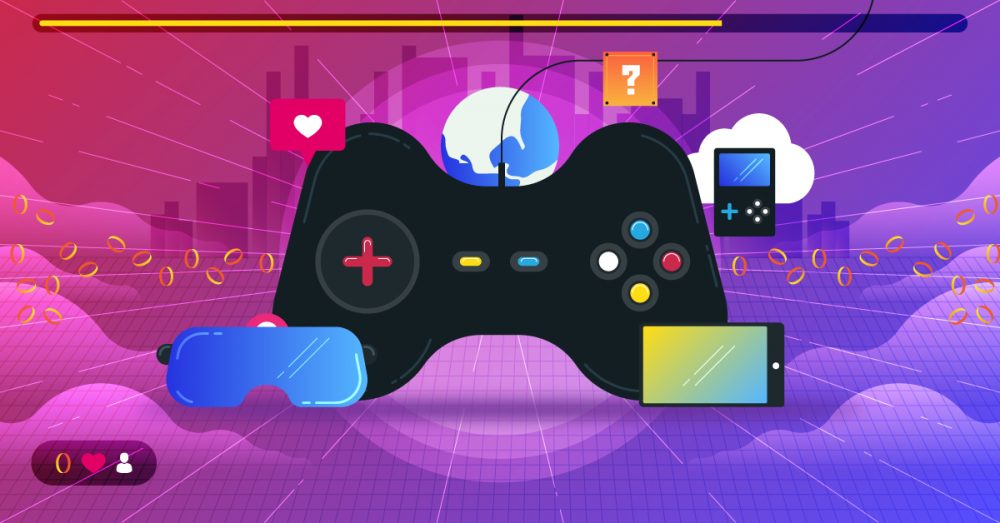The gaming industry has evolved from its birth in the 1970s, becoming a billion-dollar industry thanks to advancements in technology. Spacewar, created in 1971, marked the beginning while Atari’s Pong was the first commercially successful game, paving the way for home gaming. The 1980s saw the rise of 8-bit technology, with Super Mario Bros. being the most popular game. The 1990s saw the rise of 16-bit technology, with the role-playing game Final Fantasy VII being the biggest hit. 3D technology kicked off this century, with Halo becoming the most popular game. The 2010s saw the rise of virtual reality, with Beat Saber being the top pick.
From 8-Bit to Virtual Reality: A History of Gaming Technology and Innovations
Introduction
The gaming industry has come a long way over the years. From its humble beginnings in the 1970s, the gaming industry has grown into a billion-dollar industry. The advancements in technology have led to the creation of more immersive gaming experiences. In this article, we will take a look at the history of gaming technology and innovations.
1970s: The Birth of Gaming
The gaming industry was born in the early 1970s. The first game was created in 1971, and it was called Spacewar. The game was created by a group of students at MIT. Spacewar was based on the concept of two spaceships battling it out in space. It was a simple game, but it laid the foundation for the gaming industry.
In 1972, Atari released a game called Pong. Pong was the first commercially successful game. It was a simple game of table tennis, but it was addictive. Pong was the beginning of the home gaming industry.
1980s: The Rise of 8-Bit
The 1980s saw the rise of 8-bit gaming. The 8-bit technology allowed for more complex games to be created. The most popular game of the 1980s was Super Mario Bros. Super Mario Bros. was released in 1985 and was a massive commercial success. It is still considered one of the best games of all time.
The 8-bit technology allowed for more games to be created. The most popular games of the 1980s were platformers. Platformers were games where the player had to jump from platform to platform to reach the end of the level. The most popular platformers of the 1980s were Super Mario Bros., Donkey Kong, and Mega Man.
1990s: The Rise of 16-Bit
The 1990s saw the rise of 16-bit technology. The 16-bit technology allowed for more detailed graphics and sound. The most popular games of the 1990s were role-playing games. Role-playing games were games where the player had to complete quests and explore a vast world.
The most popular role-playing game of the 1990s was Final Fantasy VII. Final Fantasy VII was released in 1997 and was a massive commercial success. It is still considered one of the best role-playing games of all time.
2000s: The Rise of 3D
The 2000s saw the rise of 3D gaming. 3D technology allowed for more immersive gaming experiences. The most popular game of the 2000s was Halo. Halo was released in 2001 and was a massive commercial success. It is still considered one of the best first-person shooter games of all time.
The 3D technology allowed for more realistic graphics and sound. The most popular games of the 2000s were first-person shooter games and sports games.
2010s: The Rise of Virtual Reality
The 2010s saw the rise of virtual reality. Virtual reality allowed for even more immersive gaming experiences. The most popular virtual reality game of the 2010s was Beat Saber. Beat Saber was released in 2018 and was a massive commercial success. It is still considered one of the best virtual reality games of all time.
Virtual reality technology allowed for players to feel like they were inside the game. The most popular virtual reality games of the 2010s were first-person shooter games and sports games.
Conclusion
Gaming technology has come a long way over the years. From the 1970s to today, the advancements in technology have led to more immersive gaming experiences. The gaming industry is now a billion-dollar industry, with millions of players around the world. Who knows what the future of gaming technology holds? Only time will tell.
